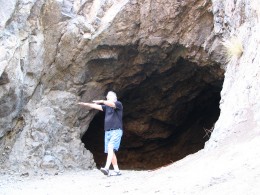Invasion of the Body Snatchers
Four movies are reviewed here, from 1956, 1978, 1993, and 2007. The article was written in 2007
We just saw The Invasion, the fourth iteration of a Collier’s Magazine story by Jack Finney that later became a novel and then one of the most well-remembered creepy movies from the pulpish days of 1950s science fiction. While watching it I was seized by a brainstorm. No, I didn’t become a pod person (though maybe I wouldn’t know it, or if I did I certainly wouldn’t be telling you…), but I just thought it might be interesting to see all four versions in a relatively short time, and compare them. The 1978 remake is readily available, and the original version was on a videotape at the library. It was the third one, the most obscure, that I wondered about, but Netflix has it, and we ordered it. Heck, while I’m at it, I might as well read the book, too.
I really doubt there is anybody out there who isn’t in on the plot device of these movies, but the endings and plots vary, so I’d better insert a
SPOILER WARNING!!!
I will be discussing these movies and the book from beginning to end, so if you haven’t seen them or read it and don’t want to know the secrets, you’d better stop here.
The Body Snatchers. A book made from a serial published in Colliers Magazine in 1954. The edition I found in the library was revised by the author in 1978, and re-titled Invasion of the Body Snatchers, presumably to tie in with the release of the re-make movie. I wish I could have gotten my hands on the original, but it seems clear that Finney only made minor changes to update it. (The narrator says the events happened in 1976.) And if I’d had the original edition I would have missed out on a delicious joke of the sort that Salvatore Albert Lombino, better known as Evan Hunter, liked to play with his readers. He was also Ed McBain, and once wrote a “collaboration” with himself. He wrote the screenplay of the Ed McBain novel Fuzz as Evan Hunter. But the really fun stuff was in the 87th Precinct novels, where his characters would often discuss a movie they had seen and pick it apart, or say how much they hated it. The joke was that the movie was based on a book written by McBain or Hunter. Early on in Finney’s revision Miles and Becky go to a movie that Miles says is pretty good. It is Time and Again, which is Finney’s most well-known novel, and one that has been optioned many times but never made.
Jack Finney apparently never wrote scripts for Hollywood. He lived in Mill Valley, in Marin County, for 45 years, and wrote some really fine stories, of which six were made into movies, including Good Neighbor Sam and Assault on a Queen. I remember his short story “I’m Scared” scared me pretty good. Time and Again was a terrific novel, with an entirely original method of time travel not involving spark-spitting machines. It is illustrated with photos and rotogravure from the 1880s in New York City, where it was set at the Dakota, where John Lennon was killed. Sadly, the sequel, From Time to Time, was not nearly as good.
The first movie begins with Dr. Miles Bunnell telling his story to skeptical police and another doctor after he’s been picked up on a busy highway shouting “They’re coming! They’re coming!” Then he tells his story in flashback, and that is where the book begins. And for a couple of chapters the movie is amazingly faithful to the book, even including long sections of dialogue that were transcribed directly. It is set in Mill Valley, which became “Santa Mira” in the film and apparently Finney didn’t update the parts describing Mill Valley as rather isolated and difficult to get to. Maybe it was in 1954, when he wrote the original story, but by 1978 it was just part of the Marin complex of cities. The movie began to deviate significantly from the book around halfway through, but none of the changes struck me as bad ones. There are things that work better in cinema, and the director, Don Siegel, and screenwriter, Daniel Mainwaring, made good choices for maximum visual and paranoid impact.
Then the movie goes for action, as a movie must, while the book remains more intellectual. Finney lays out the mechanism whereby the pods drift through space randomly and fall to a planet, where they take over … everything. Not just humans, but all animal and plant life. They will even duplicate a skeleton—which is how Miles and Becky thwart an attempt to turn them into pod people—or a tin can. But the catch is, these duplicates will only last five years or so, then they die, and more pods—really spores—drift into space again. One of the pod people even gets to deliver a lecture on ecology. Why is what we’re doing all that different than what you have done? You cut down the virgin forests of America, you exterminated the passenger pigeon. This is simply part of our life cycle. We do it because that’s simply the process, like you eating and digesting and defecating. We have no emotion, but who needs it? Things are a lot calmer this way. It turns out that the moon and Mars both used to have flourishing civilizations, but were infected by pods and are now lifeless.
And here, at the climax, the movie departs radically from the book … for the better, I think. In the book Miles and Becky escape one last time by injecting some pod people with morphine, as in the movie. They flee, without any real hope, toward the 101 freeway, pursued by the pod people. Just short of the highway they encounter a field planted with pods. They find a farm shed and pour gasoline onto the field and ignite it. It burns for a while, then sputters out. They are defeated … but wait! The remaining pods begin rising into the night. What’s happening? Miles thinks the primal programming of the pods has decided this planet is too hostile. He thinks this sort of thing has happened here and there around the planet, and little groups of survivors have fought them off. We’re outta here! the pods seem to be saying. These Earth people are too friggin’ tough! The pod people watch the exodus, and then they give up, too. With no more pods, they know they are doomed, since they can’t reproduce sexually. Becky and Miles, and their friends the writer and his wife, move back to Mill Valley and live there in peace, unmolested by the pod people, who are dying off rapidly. If you visit Mill Valley, Miles says, you’ll see a lot of empty houses, but they’re filling up fast, and soon no one will know anything ever happened here.
This is a pretty weak ending, I think you’ll agree, compared to the gut-wrenching finale of the first movie. Oh, forget about the tacked-on ending the producer insisted on, where a truck had an accident on the freeway and spilled a lot of pods, and the people Miles has been talking to look at each other in wild surmise and immediately call the FBI. That always felt phony. Sometimes a movie actually improves on a book … and this is by no means a bad book, so it’s all to the good.
#1: Invasion of the Body Snatchers (1956) Fifty-one years ago now. I was nine, and didn’t see it in its initial release. It was only after I got my license and could go to the dusk-to-dawn horror marathons at the Don Drive-in in Port Arthur, Texas, with three friends filling up the old Hudson (and sometimes one in the trunk), that this one first creeped me out. We saw some of the most incredible trash at the Don, but this was a keeper.
Alien invasions aside, viewing it today I can’t help but wonder how alien this 1956 world must look to today’s teens, even if there were no pods taking over bodies. Men wore suits and ties and dress shoes most of the time (“sneakers” were for basketball only), and sucked on pipes while they mowed the lawn. Women wore what we’d call cocktail dresses and high heels just to walk around town and go shopping, or sitting around the house. They wore girdles, bras that pushed them up and out like missile nose cones, and lots of petticoats. Everybody drank a lot. Doctors smoked cigarettes. Nobody wore seat belts. Women waited in cars for men to come around and open the door for them. They expected it. Gasoline was 29 cents a gallon, and the attendant cleaned your windshield and checked your tire pressure. It might as well have been another planet.
Whether or not this film can still work its wonders on a generation desensitized with buckets of blood, half-second jump cuts, CGI SFX, Vaseline goo galore, and deliberately shaky camera work is a question I can’t answer. Whether it still works for me and Lee is an easy one: An emphatic yes! It is creepy as hell. The black and white photography is sensational. You want film noir? Look no farther. The special effects are amazingly good, and you don’t even have to make much allowances for the primitive state of that art at that time. They are by Milt Rice and Don Post, and supposedly they had a total budget of $15,000. With that, they created the very first gooey aliens that made repulsive sucking sounds as they were born. Ridley Scott and Hans Giger and hundreds of lesser imitators owe these guys a big debt of gratitude. The music by Carmen Dragon (isn’t that a great name?) is appropriately melodramatic.
Everybody remembers the iconic moment when a frantic Kevin McCarthy is stumbling down the highway, trying to warn people of the coming menace. But it is a scene slightly before that which will always stick with me. Miles has returned to his girlfriend, Becky, (Dana Wynter), who has fallen asleep in the tunnel while he was away briefly. He embraces her, kisses her … and then pulls away. In extreme close-up we see the horror on his face as he realizes she has become a pod person, and then we see her face, impassive and yet somehow infused with evil. The lighting, the moisture of their skins, the dirt and grime, the emptiness of her eyes … they all contribute to a picture of what I conceive as the ultimate horror. She’s not in there anymore. She’s worse than dead. It chills you to the bone.
I have a quibble. I thought the pods grew duplicate bodies, exactly like the person they were going to replace, and then disposed of the original person. So how did they replace Becky in the tunnel when there were no pods around? Maybe I missed something.
What would I do without the Internet Movie Database? From it I learn that the film was originally going to end with Miles shouting uselessly to the motorists on the highway, but the producer didn’t want such a downbeat ending, so the last scene and the opening scene, with Miles in the police station telling his story, were added. I suppose calling in the FBI might offer a ray of hope … if I didn’t suspect that most FBI agents are already pod people. Anyway, it’s a small flaw. I’d have preferred the more honest ending, that these critters are just too subtle, too good, and we’re going to lose because nobody believes Miles. Does that make me a bad person?
I’m not going to get too deeply into the theories that the movie was an allegory about either creeping communism or McCarthyism. The same thing has been said about Robert A Heinlein’s The Puppet Masters, which has a very similar story, though the target there was surely not McCarthyism, as Heinlein was a supporter of the little shitbag from Wisconsin, at least at first. You can take it any way you want, or as a straight thriller story. I do think that paranoia was a big part of American society in that time, and made the film resonate even more than it would have in, say, 1930. But allegories are something I can take or leave, and mostly I leave.
The theme of paranoia—you don’t need pods to access that fear we all have, but it’s a nice and creepy way to do it—is a very strong one. This, and Rosemary’s Baby, are among the best examples of the “What if your paranoia was justified?” sort of story.
If you keep your eyes peeled you can see Sam Peckinpah in Miles’s basement, as the gas meter man who is really putting the pod down there to replace him. Shame on you, Sam! Apparently he also tried to take a writing credit until challenged by the real writer before the WGA, when he dropped the claim. Shame again!
EXTRA BONUS FEATURE!!!
The IMDb lists filming locations for movies when that information is available. The original movie has attained classic status, and as such has been researched extensively by film buffs, so there is a long list of locations for this one. Looking down the list, I realized that almost all of them were within a couple of miles of our apartment! So we set out on a Body Snatchers day of driving around to see what they looked like today, Lee with camera in hand, as always. We made some interesting discoveries.
2823 to 2831 Hollyridge Drive. This narrow street runs along the spine of a ridge that overlooks Bronson Canyon in the Hollywood Hills. In 1956 the slopes were largely empty, or at least empty enough that they could find camera angles that didn’t include houses. This is where they filmed the long climb up the stairways with Miles and Becky pursued by the pod people.
It’s changed. Now houses cling to both sides of Hollyridge and you can only glimpse the views these people have from their back decks. There is no gap at all between the houses we were looking at. We were about to leave when Lee talked to a couple of construction workers (construction is happening on maybe every fourth house up there, it seems) who said there were still some steps out there, and we could see them if we walked down this private driveway that was shared by about a dozen homes. And down was the key word here. The road was almost a 45 degree angle. But we descended about 100 yards, and sure enough, you could see the steps, which now led pretty much from nowhere to nowhere. The houses above hung out over the canyon in that precarious Southern California way, and the houses below offered no access to the public who might want to climb the steps. It looked to me like a much cheaper and more interesting way to work out than on a Stairmaster, but I’ll bet no one uses it for that. Might get eaten by coyotes.
Bronson Cave. The IMDb led us seriously astray here. They give the address as 4730 Crystal Springs Drive, which turns out to be the ranger station in Griffith Park. We drove around by the merry-go-round, and the hills surrounding the area were all roped off. The big fire a few months ago had burned right down to the road, and no one is being allowed in until the rainy season. We looked, but couldn’t see anything that resembled a cave. But we did see a coyote, who looked at us calmly and only moved away a little bit when Lee got out of the car to take his picture. He seemed to want us to stay about 30 yards away, and we had no intention of approaching closer, even with a chain-link fence between us. He was a beautiful animal. I’ve always admired coyotes.
Later, we went home and I went looking for the cave on Wikimapia, which is really neat in that it allows users to bookmark places on the satellite maps. I figured if I looked around a bit somebody would have marked the cave, and I was right. It was all the way across the park, just down the hill from where we’d been earlier! So we drove up Bronson Canyon as far as we could, and walked up a gravel road a ways, and there it was.
It’s not real impressive, but it may look a little familiar. That’s because it’s been in about 200 movies and TV shows. It’s not really a cave, but something left behind by a quarry that closed in 1920, and it’s been a film location ever since. This is where Miles and Becky make their final hiding place under some boards as the pod people pursue them. It’s where Miles leaves Becky, “Just for a moment …” (the most ominous words that can be spoken in a horror movie, except for “Let’s split up and look for the slasher/monster!”) … to his sorrow. It was also the Batcave in the original TV show. It has featured in some major motion pictures, but more often is seen in low-budget potboilers whose producers need a wilderness location real close to the studio, such as The Brain From Planet Arous, Earth vs. the Giant Spider, It Conquered the World, Lobster Man From Mars, Teenage Cave Man, and the ever popular Eegah! Over the years many a man in a cheesy monster suit has come stumbling out of that cave, such as the inexplicable gorilla with a space helmet in the equally inexplicably titled Robot Monster. When Larry Blamire set out to make his intentionally stupid ‘50s horror movie spoof The Lost Skeleton of Cadavra, it was only natural that he’d come here. And he did.
When you get to the cave you soon discover that all those cameramen had to chose their angles carefully as it is really only a short tunnel, squarish on the west side, and with three different entrances on the east, all of which look more like natural caverns. The east side is a box canyon with steep, rocky cliffs. You might as well be in Arizona, yet if you walk about a hundred yards west you get a terrific view of the Hollywood sign.
This canyon and the park at the end of it is a favorite place for local residents to walk their dogs. There were lots out people out walking, with or without pets, and two women passed us on horseback. And then Lee looked up and saw a coyote silhouetted against the evening sky. Two coyotes in one day! We didn’t see that many in Death Valley. This one was as unafraid as the other one had been, looking down at us calmly. A lady walking a little fluffball of a dog said the critters came into her yard all the time, and she had to keep the dog inside for fear of having it become coyote chow.
1200 North Virgil. These next few addresses are quite close to us, pretty much walking distance. Most of them are disappointing. Hollywood has changed a lot since 1956. This one at least has the remnants of something from the movie. It is surrounded by a chain-link fence partly overgrown with ivy, but though some chinks you can see a derelict, rusted-out structure that we think was the gas station where one of the pod people stashed a pod in Miles’ trunk. Tricky bastards!
1710 North Vermont. It’s hard to tell if this building figured in the movie. If it did, then it’s changed a lot, like so many locations. It’s a restaurant now, at the bottom end of the Los Feliz Village, four blocks of boutiques and mid- to upper-scale restaurants. Fred 62, a place that makes one of the best burgers in LA, is at the other end. The IMDb says the alley behind this building was a location, too, probably where Miles and Becky hid while being chased by the pod people.
1927 Rodney Drive. My guess is this was the location of one of the houses used in the movie. Without some research into land sales and such there’s no way to know, as there is no 1927 now. It was torn down, probably along with a lot of neighboring houses, and two undistinguished 4-story apartment buildings replaced them.
2330 Hillhurst Avenue. This is listed as the “Chandler Estate.” I don’t know what that means. The only Chandler Estate I can find in LA is way down in ritzy Hancock Park, and was the home of LA Times publisher Norman Chandler and his wife, famous for the Dorothy Chandler Pavilion. There’s no 2330, but there is a 2320, now a modest little 4-bedroom, 2-bath, 2791 square-foot home that doesn’t resemble anything in the movie. That’s probably because it was built in 1957, the year after the movie. I’m betting the original house was vacant when they were shooting there. Movie-makers like to rent vacant houses, and if it’s about to be torn down, all the better; you don’t have to worry about damages. 2320 Hillhurst can be yours for the bargain price of $1,278,356, if you act quickly!
Sierra Madre. This is the little village where most of the “Downtown Santa Mira” scenes were shot. It is out east, not far from the Santa Anita racetrack, nestled up against the San Gabriel Mountains and the Angeles National Forest. The most memorable scenes were shot in the “Town Square,” which is actually a town triangle. Here the pod policeman stood and asked pod people to come forward if they had relatives in neighboring towns, take a pod off the back of a truck, and drive away with it to infect them. None of the buildings look familiar, but the triangle is still there. It is anchored on each corner by big trees that look ancient, but weren’t present in the shot in 1956. We went to City Hall to confirm this was the location, and a man there told us it was, indeed. There was a model in the lobby of Sierra Madre in 1944, when I’m sure there was a lot of farmland between the little town and Pasadena to the west, and Arcadia to the south. In the model, the tracks of the Red Line cars ran down Sierra Madre Boulevard and then curved north around the little triangular park, so the park was basically a streetcar stop. By 1956 the Red Line was nothing but a fond memory.
Sierra Madre’s other claim to fame is the world’s largest flowering plant—according to Guinness—a 114-year-old wistaria vine, one of the Seven Wonders of the Horticultural World. People come from all over the planet to marvel at it. We saw a report on it by Huell Howser, and were sort of hoping to see it while we were out there. (I seem to remember that it got so large that it collapsed the house it was growing on.) But it’s location seems to be a secret. The City Hall guy said that since the plant was on private property he could not legally direct tourists to its location. I figured that if we’d asked someone on the street we probably could have been directed to it … but we didn’t ask. There was something about the town … It was very neat and clean, a picture postcard. The people went about their business in a seemingly normal fashion …
When I got home I figured the famous plant would be easy to find. But though I found mention of it here and there, I couldn’t discover its location. I went to Wikimapia. Surely someone would have bookmarked it. No such luck. I scanned the satellite pictures for a while, but nothing leaped out at me as being a very large plant. I went to the Chamber of Commerce website, and found out that you can only visit the monster one day out of the year, during the annual Wistaria Festival in March. You have to buy tickets for a $7 bus ride that takes you there and back. Jeez, I wonder if you have to be blindfolded and sign a secrecy agreement?
Doesn’t it seem a bit … strange? Usually if a town has the Biggest, the Oldest, the Weirdest, the anything-est something, they put it on a sign right at the city limits. Come See The World’s Largest Rutabaga! Welcome to Oxturd, Rutabaga City! They’ll have signs pointing the way, and a T-shirt shop next door. For some reason, Sierra Madre doesn’t want you to know where …
Oh my god. I see it all now. That friendly face at City Hall, that suddenly shut down when we asked about the wistaria. Wasn’t there something odd about that man’s eyes? All the calm, peaceful people on the street … And the so-called “Wistaria Festival,” luring people from everywhere. They enter under the huge tangle of vines … but what comes out? Why only one day? Is there something else ripening in the masses of vines? Something that bears fruit pods only once a year? I see it all, it’s clear as can be … I’ve got to warn everybody, time is running out! … They’re here! They’re here!
Not too long after they started issuing DVDs with a kajillion “extra features” I stopped watching most of them, except for the blooper reels, if they had them. Like so many people, I thought that “director’s commentary,” sometimes as many as four participants contributing, would be really interesting. Then I watched some. Then I watched a few more. Then I pretty much gave up. I’m afraid that I found most of them pretty boring, and some downright stupid. I was willing to listen to what Louis Malle had to say about Damage, for instance, but I couldn’t care less about Lars von Trier’s comments on Dogville, and when they started including the insights of somebody like the director of Taxi, I lost interest entirely. It’s hard enough to watch Taxi once … and now that I think of it, we didn’t. Left the drive-in after a horrible half an hour.
But the second version of Invasion of the Body Snatchers is on DVD, and comes with a director track, so I decided to take a listen.
#2: Invasion of the Body Snatchers (1978) Starring Donald Sutherland, Brooke Adams, Leonard Nimoy, Jeff Goldblum (when he was still tall and skinny, before he got tall and pumped up), and Veronica Cartwright. Directed by Phil Kaufman, who did three very good films—{{The Right Stuff, The Unbearable Lightness of Being,{{ and The Great Northfield Minnesota Raid—and then some stinkers, like Quills and Twisted. The screenwriter, WD Richter, has a similar pedigree, having written some nice quirky things earlier in his career, like Slither and Nickelodeon and the underrated All Night Long, and this one, but lately has wallowed in shit like the Stephen King grinder Needful Things and the perfectly awful Stealth, redeemed only by the Holly Hunter Thanksgiving movie, Home For the Holidays.
This one takes a new tack, starting right out with the invading creatures themselves, which are shown blowing away from a dead planet and drifting through space to fall as a gooey rain all over San Francisco. Soon baby pods are forming. But these have little red flowers! Miles Bunnell has become Matthew, and Becky Driscoll has become Elizabeth. She’s still married this time, and they both work in the Department of Public Health, he as an inspector finding rat turds in fancy French soup, she as a forensic scientist. Kaufman goes for the atmospheric creepiness in almost every shot, and it works very well. People are seen running, and no explanation is given. People look over their shoulders suspiciously. Motorcycle cops whiz by. A priest (Robert Duvall!) is on a swingset, glaring at everybody, a nonsensical image that is somehow disturbing. The interior lighting is dark and ominous, with sickly colors, the exteriors are drab and gray, like San Francisco is much of the time. Without actually having done anything yet, Kaufman has managed to get you nervous and at least moving toward the edge of your seat.
(I have to add that, though Kaufman plays fair most of the time, I counted three separate instances of what I call “Whew! It was only the cat!” scenes. I hate those scenes, they are such an easy cheat! You know, it was a dark and stormy night, something makes a loud noise, our hero or heroine gasps … and it’s only the cat. This type of mind-fuck includes the arm extending into the scene to grab someone by the shoulder: “Jesus! It’s only you! You scared the shit out of me!”) (But I loved the “cat” scene in The Terminator, which I’m sure was a spoof. There’s a noise, Linda Hamilton jumps and squeals … Whew! It was only the pet iguana!)
(One more aside. There is an incident of jokus interruptus in the film. Matthew is telling a joke to Elizabeth. “These guys in the foreign legion have been besieged for a month, and the Captain calls them together. ‘Men,’ he says, ‘I have some good news and some bad news.’” And Elizabeth says she’s heard it. Well, dammit! But Kaufman completes the joke on the DVD. “The bad news is we have nothing left to eat but camel shit. The good news is, we’ve got plenty of it.”)
The movie delivers well when it comes to the critical scene of the pods reproducing themselves. All the special effects were practical, not optical, and of course there was no CGI in those days, so many scenes used the old trick of projecting the film in reverse, such as flowers unfolding from the pods. The emerging pod people were simply humans of different sizes, from dwarfs to the stars themselves, suitably wrapped in pink goo and spiderwebs.
Kaufman keeps emphasizing how this was a “low budget” production, being shot entirely on locations with no real sets except for a large warehouse where the finale happens, with explosions and fires, but fairly restrained when you compare it with similar scenes these days. The budget of the first movie was $300,000, or $417,000, depending on who you believe, not bad for a B-movie at the time, and the remake came in at $3,000,000. I’d call that medium budget in 1978. It made back a lot more than that, something like 24 million. The original was shot in 19 days. Don’t know how long the remake took. It is loaded with familiar San Francisco scenes, including the famous “painted ladies,” the Victorian houses around Alamo Square. There are two significant cameos, one of them obvious: Kevin McCarthy running around banging on windows, as though he’d been doing this since 1956! The other is original director, Don Siegel, as a pod taxi driver. Many scenes evoke similar scenes from the original, including Sutherland hiding below a bridge as pod people thunder along overhead. And I thought it was interesting that in the original, when they are running away, Miles and Becky are struggling uphill, while in the new one everyone spends most of their time running downhill. If that’s symbolic, I don’t know what it means.
The music is very, very effective, using early synthesizers combined with sound engineering such that it’s hard to tell where music ends and sound effects begin. One new touch was the “pod people shriek,” and I remember it being very effective the first time I heard it, back in 1978. In the original the pods never did anything that wasn’t completely human, lacking only emotion. In the new one, there is this one thing, a nails-on-a-blackboard call to alert the others. Makes the hair stand up on the back of your neck.
All in all, this is one of the better instances of what I’ve always felt is a dubious enterprise in the first place: the remake of a classic. Usually it’s a bad, bad idea. There are exceptions, and I exempt the remaking of classic tales for a new generation with stars they are more familiar with, and in a style that doesn’t look so stodgy. Because let’s face it, acting was different in 1956 than it was in 1978. Even the best stuff was more melodramatic. But I reject the notion of remaking something simply because we can now do it with more spectacular effects. And this film does, too. Kaufman felt this story would say different things to different generations. In the ‘50s it was creeping communism or blatant McCarthyism. Here, he feels it is the blandness he saw taking hold all around him, exemplified by Leonard Nimoy as the feelgood psychiatrist. There are those who say the subtext of the third one is the spread of AIDS. I dunno, I haven’t seen it yet. But it should arrive in the mail any day now …
#3: Body Snatchers (1993) … and here it is! And it is definitely the underachiever of the bunch. In addition to having a rather brainless ending like #4, it doesn’t achieve nearly the sense of creepiness that #2 had. Like #1, this one has B-movie written all over it, but it doesn’t really transcend its genre like #1 did, and I’m sure that in 50 years this one will be forgotten while people are still watching #1.
It’s directed by Abel Ferrara, who has 21 film credits, including at least one that is hardcore pornography (Nine Lives of a Wet Pussy) from back in the days when some porn actually told a story. Looking at the list, I see that I’ve seen several of his films, but can’t recall anything about any of them. Not a good sign. (Wait a minute! I actually thought Bad Lieutenant was okay … but I don’t recall why.)
It stars Gabrielle Anwar, who has had a rather undistinguished career, mostly on television, and who resembles Martha Plimpton a little and Ellen Muth a little, though she is prettier than either of them and less talented than both. Meg Tilly is here, and a lot more convincing after she’s zombified than before, and Forest Whitaker is overwrought in a small part. The only other recognizable name is R. Lee Ermey, the guy who played the D.I. (and actually was one in real life) in Full Metal Jacket and made that performance into a pretty good career as a character actor. Let’s hope he doesn’t run for president like that asshole Fred Thompson. Can’t you just see R. Lee in negotiations with the North Koreans? “President Kim, I’m gonna pull off your head and shit down your neck!”
This version has been completely re-imagined, with only the pods to connect it to any of the other stories. The main character is little Ms. Anwar, 16 or 17 years old (though she was actually 23, she gets away with it), who is brought by her EPA father to an isolated military base where chemical weapons are stored. Trying to appeal to the youth market, I guess. Her dad is a cipher, and her stepmom (Tilly) isn’t much more. She’s got a little brother. Things get creepy pretty soon. Having it on an army base was a good idea, I guess, though they didn’t do much with it. I mean, pod people is what the military wants, ideally, isn’t it? If soldiers were all the same height and weight, intelligent enough to shoot a rifle, not worried about death, and capable of being emotionless, cool killers, what general in the world wouldn’t be happy as a clam? Why do you think they call their clothes a “uniform?”
All four of these movies had plot and logic holes, but the ones in this one are tank-sized. We are encouraged to infer that the pods were the result of some chemical contamination in the swamp where they’re being grown (I don’t know, nor care), and yet they speak like an alien race, talking about other planets and the continuity of the species being all-important, individuality meaning nothing. At the end Anwar escapes in a helicopter with her new boyfriend, and they proceed to kick some alien ass. A lot of alien ass, leading both Lee and me to wonder just how many damn rockets that whirlybird carried. Damn, send a couple of those to Iraq and we could blow up the whole place in an afternoon and get the damn thing over with! Anwar shows very little reaction to the podification and death of both her father and little brother, just a tear leaking from her eye. And instead of a tacked-on ending like #1 or a downer ending like #2, this one opts for ambiguity. They’ve escaped … but have they? We’ll never know unless they make a sequel. Not bloody likely.
Anything good about the movie? Well, the pods and pod people and transformation is still scary, even in this rather inept mess. The story and concept is just so damn strong. Other than that … well, watching this movie was another example of me and Lee doing it so you don’t have to …
#4: The Invasion (2007) And now we come to the last iteration of this old story. I’ve been in love with Nicole Kidman since I first saw her in the little gem, Dead Calm. I was always a little sad about the Scientology thing, which Tom Cruise seems to have roped her into. He must be capable of considerable persuasion; now he’s got Katie Holmes in it, too. Believers in wacko cults always strike me as pod people, whether it’s the Christian Born Again, or Jim Jones, or Scientology, so it seemed ironic that Nicole would be in this. However, in a further irony, she’s playing a psychiatrist as a good person, and I doubt a Scientologist would do that, given their well-known antipathy. (They even have a “museum” on Sunset Boulevard devoted to the evils of psychiatry.) So I looked her up, and saw that when she remarried it was in a Catholic church, so maybe she’s reformed. I’m not wild about Catholicism, but it’s better than the Hubbardites.
So. What about the film? First, and it almost goes without saying, we over-50-somethings have to put up with the obligatory jerky camera movements, extremely short cuts, murky darkness, and out-of-focus shots that have been the rage for about 20 years now, and which I’m beginning to despair will never go out of fashion again. Okay. If you’re going to a thriller/action/horror movie today, that’s what you’re gonna get. Deal with it, or don’t go.
Second, they made quite a few of what I thought were fundamentally bad choices … and the story is still good. There is a genuine power in the concept of pod people that doesn’t seem to lose its sting even in the hands of less-than-genius writers and directors.
This time we’re off the military base and back in the big city, in this case Washington, DC. A likely place for pod people to hide, I think you’ll agree. I mean, who would notice? I continue to believe that a small town is the better setting for this story, but I guess it would be scary anywhere.
We begin with a space shuttle burning up on re-entry, with shots that look exactly like Columbia disintegrating over Texas. That will probably always be hard for me to watch. This was an “unscheduled landing,” and the astronauts were bringing something back with them. A man from the Centers for Disease Control is on the scene of some wreckage pretty fast, which tells us the government knows something about it. The fool manages to get himself infected with whatever it is they found out there in space. He just happens to be divorced from …
… Dr. Carol Benell, psychiatrist. The male equivalent of Becky Driscoll is Daniel Craig as Ben Driscoll, her medical doctor friend, the last names being pretty much the last remnant of the original film and book, except for the fact that in both they start out as “just friends,” though a puppy dog couldn’t be less transparent than Ben about his secret love for her, and the romantic interest develops as they fight the pod people together. Jeremy Northam as the pod person ex-husband, who has never wanted to visit his son much, suddenly wants him to come spend some time at his place. Said the spider to the fly.
I said they made some wrong choices, but having the son be the object of contention is one of the good ones. There are few themes more powerful than that of a mother trying to protect her child, and Nicole Kidman plays it very well, and it is this tension that makes the film work for as long as it does … which is about halfway. After that, though it is never boring, it loses steam in a fog of narrow escapes and car chases.
Wrong choice: The pod people here are entirely too zombie-like. It’s not a slobbering, staggering thing, this isn’t Night of the Living Dead, but you can instantly spot them, and it’s clear the director wanted you to. The true horror of the concept is that you can’t tell. Only those closest to the pod people get the feeling that “My husband is not my husband!” and they can’t explain why, because he looks exactly the same and remembers everything he should remember, and acts exactly the same, until finally cornered.
Disastrously wrong choice: The skinny is that early screenings of the final cut were not good, or at least someone at the studio thought so. At great expense, they brought in those masters of by-the-numbers mindless violence, the Wachowski Brothers, who made one good action/SF movie, The Matrix, and then squeezed it to death with endless stupid sequels. (Their current project? Speed Racer. Oh, gag me!! One of the dumbest animated cartoon series ever to squat there like an unmoving non-animated lump on your TV screen. Should make a terrific movie.) They also brought in a new helmer (as we say in Variety-speak), James McTeigue, who has up to now been only a second unit director, that is, somebody who goes out and shoots the action scenes the real director can’t be bothered with. (The director of record is Oliver Hirschbiegel, who up to now has only made films in German. The only one I’ve seen was Downfall—Der Untergang—which concerned Hitler’s last days. The original screenwriter—the one who seems to have done most of the good stuff—is Dave Kajganich. This is his first produced script.) None of those new guys got screen credit, but you can bet your life they got a ton of money. So earlier this year these script doctors went out at night on Broadway in downtown Los Angeles and filmed the climactic brainless car chase, the first part with dozens of “pod people” clinging to the car Nicole was driving, the second part with the car on fire and Nicole being directed by a guy in a helicopter. Whee!!! Yawn!!! During the filming the camera truck towing the car she was “driving” lost control and skidded into a lamppost, and several stunt men were thrown off and injured. Nicole was undamaged. Pod person?
Sign of the times: The pods are totally gone now. This virus spreads through sneezing, coughing, blood exchange and—what else?—vomiting. Lots of fun, that, watching pod people yorking up brown gruel into someone’s cup of coffee and then handing it to them. But that’s the age we live in, isn’t it? The grosser the better.
One problem I think all four films had was that people figured things out a lot quicker than normal people really would have. Even in the book, a lot of the conclusions Miles came to were simply by “intuition,” as he states it himself. Suddenly he just knew. Well, that’s not a major flaw, especially in an action movie, where events have to be compressed and things have to be explained as painlessly and quickly as possible to avoid big lumps of exposition. In this one they have researchers and powerful computers analyzing everything with amazing speed, and I guess that’s a sign of the times, too. You have to give the production’s computer programmer a chance to come up with some nifty graphics of the alien virus converting human tissue to alien tissue.
The major copout here is the same one as in the first movie, but even worse. Not only do we defeat the alien virus, but it turns out it can be cured. Pod people can be returned to normal with nothing worse than amnesia for the time they were pods. This was wildly unsatisfying to me, but I have to say I expected it. Major studios will seldom allow a big-budget movie to have a downer ending. Even the excellent Children of Men had the woman with her baby escaping to some ill-defined Shangri-La at the end. (They did kill the hero, so I guess that counts for something.) Remember Blade Runner, and the obviously tacked-on ending where Decker and his replicant girlfriend suddenly find themselves traveling though a beautiful wilderness, of which no hint had been given in the story to that point? It makes me long for something like Brazil, where the hero and girlfriend were driving into the standard happy sunset … and suddenly we’re jerked back to him strapped into a chair, dead, and we realize it had all been his dying fantasy. Or another Terry Gilliam film, Time Bandits, where the boy comes back home to find his parents dead. Gilliam has some guts, though he’s had to fight to express them.
What’s the matter with me? you may be asking. Why this insistence on unhappy endings? Well, I don’t insist on them, but happy endings are a dime a dozen in alien invasion movies. You’ve seen it all before. Whew! That’s the end of the giant ant (killer shrew, robot monster, Martian, giant tarantula, giant scorpion, 50-foot-woman, crop circle alien) invasion! Good thing they can’t stand being doused with water (or being jolted with electricity, or exposed to red kryptonite, or getting a case of the sniffles)! And when a hopeless ending seems to grow naturally from the situation, I think you should follow it to its depressing end. This is supposed to be a horror movie, right? What can be more horrible than that, after a valiant struggle, we lose? Of these four directors, only Philip Kaufman got it right, though Don Siegel tried.
So now you know a whole lot more than you may have wanted to know about the various invasions of the various body snatchers. And I’ll leave you with this thought:
DON’T GO TO SLEEP!!!














